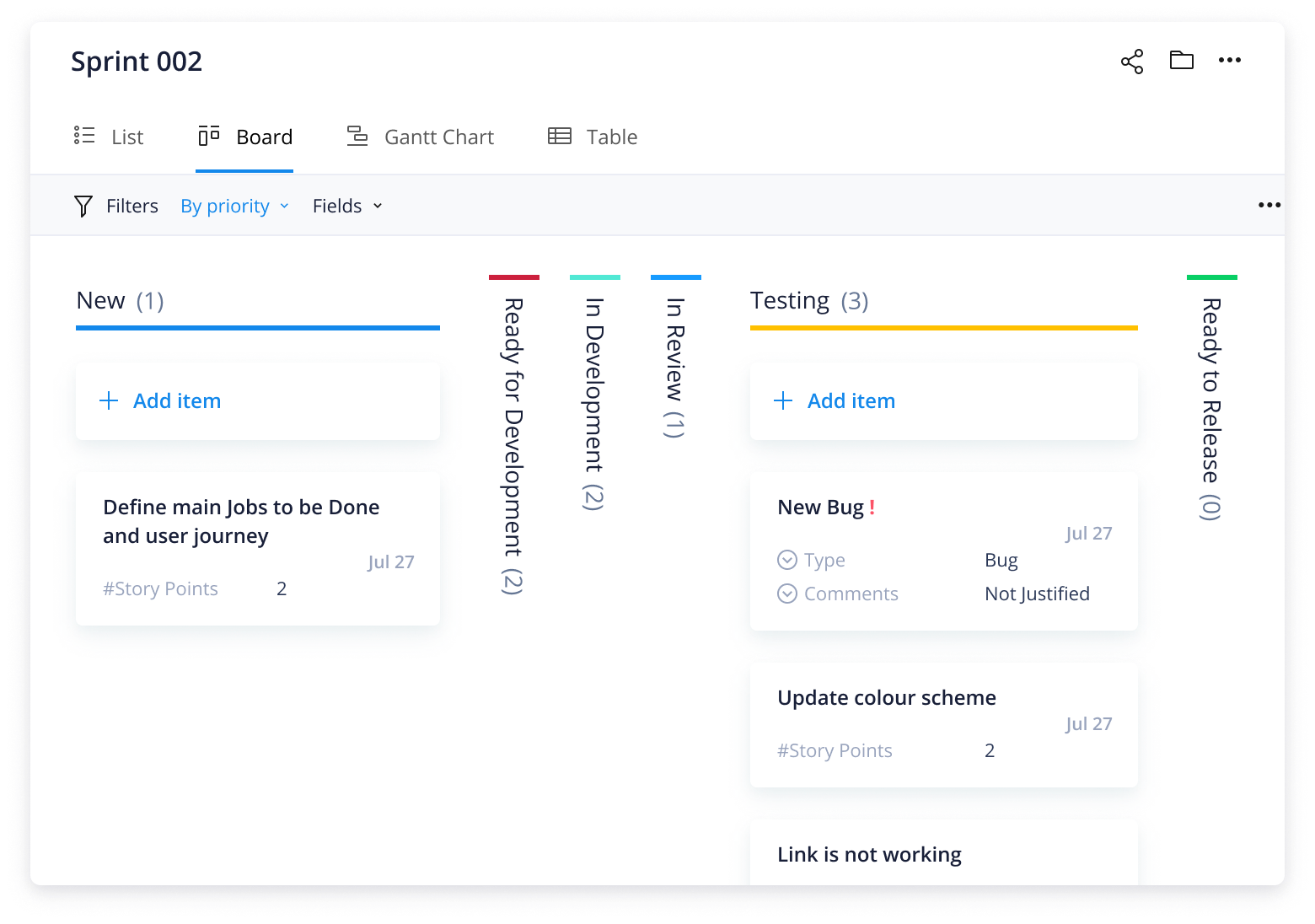What Are the 4 Pillars of Agile?
- 1. What Is the Agile Manifesto?
- 2. The Benefits and Advantages of Agile
- 3. What Is Agile Operations?
- 4. The Agile Software Development Life Cycle
- 5. Building an Agile Team Structure
- 6. A Guide to the Scaled Agile Framework (SAFe)
- 7. Agile and Lean Portfolio Management
- 8. Understanding Squads, Tribes, and Guilds
- 9. What Is Agile Transformation?
- 10. Themes, Epics, Stories, and Tasks in Agile
- 11. A Complete Guide to Agile Epics
- 12. How to Create User Stories
- 13. Agile Estimation: Understanding Story Points
- 14. Using Gantt Charts in Agile
- 15. Glossary
- 16. FAQs
- 1. What Is the Agile Manifesto?
- 2. The Benefits and Advantages of Agile
- 3. What Is Agile Operations?
- 4. The Agile Software Development Life Cycle
- 5. Building an Agile Team Structure
- 6. A Guide to the Scaled Agile Framework (SAFe)
- 7. Agile and Lean Portfolio Management
- 8. Understanding Squads, Tribes, and Guilds
- 9. What Is Agile Transformation?
- 10. Themes, Epics, Stories, and Tasks in Agile
- 11. A Complete Guide to Agile Epics
- 12. How to Create User Stories
- 13. Agile Estimation: Understanding Story Points
- 14. Using Gantt Charts in Agile
- 15. Glossary
- 16. FAQs
Introduction to the Pillars of Agile
Agile has emerged as a powerful methodology that helps organizations adapt to change, deliver value faster, and improve collaboration. But what exactly makes Agile so effective? The answer lies in its foundational pillars.
In this brief article, we delve into the core principles that underpin Agile, often referred to as the “four pillars of Agile.” These pillars are the guiding lights that inform Agile practices and ensure teams can respond swiftly to changing environments.
Before we begin, you can grab a free trial and explore our tailor-made template to discover the full potential of Agile right away.
What are the 4 pillars of Agile?
The Agile Manifesto was founded in 2001 with the aim of “uncovering better ways of developing software by doing it and helping others do it.” The document includes four core values, also known as the pillars of Agile. These Agile pillars help guide teams as they navigate their projects.
The four Agile pillars are as follows:
1. Individuals and interactions over processes and tools
The first of the Agile pillars outlines the most important priority: people. You should communicate regularly with your Agile teams and ensure each member feels like a valued employee. Processes and tools are useful assets to have, but they are there to support your teams, not overshadow them. The best Agile projects will be driven by engaged individuals that interact well with one another.
2. Working software over comprehensive documentation
The Agile Manifesto was designed to remove the frustrations of “documentation-driven, heavyweight software development processes.” Instead of wasting time preparing detailed product specifications, Agile teams summarize all relevant information in a single user story. This streamlined approach means developers can get to work right away and prepare their software for release. The idea here is to get a working deliverable out and refine it later, rather than trying to document everything before the work even begins.


3. Customer collaboration over contract negotiation
Customer collaboration is one of the most well-known Agile pillars. It is viewed as favorable to contract negotiation, where the customer’s desired deliverables are noted in a legal contract before the software development process begins. If the finished product does not meet expectations, a contract renegotiation has to take place.
Under the Agile philosophy, however, customers are invited to collaborate with developers throughout the software development life cycle, offering their thoughts and potential suggestions while the product is being built. This way, their feedback is baked into the development process, meaning the end deliverable is more likely to be compatible with the user’s specific needs.
4. Responding to change over following a plan
Merriam-Webster’s definition of the word ’agile’ is “having a quick, resourceful, and adaptable character.” This matches the description of Agile team members, who are open to change and willing to adapt their software to ensure that the final deliverable is the best it can be. This Agile mindset contrasts with traditional methodologies such as Waterfall, which aims to avoid change and stick to the original project plan as much as possible.
The four pillars of Agile are at the heart of successful software development. The Agile Manifesto also includes 12 principles, which go into more specific detail than the Agile pillars. You can read them here.
Manage Agile pillars with Wrike
Understanding the four pillars is fundamental to any organization or team aiming to implement Agile practices. These pillars are not just principles; they are the very foundation upon which the Agile methodology is built.
However, understanding these pillars is only half the battle. Implementing them effectively requires the right tools. This is where Wrike’s Agile teamwork template comes into play. Designed to foster collaboration, adaptability, and continuous improvement, Wrike’s template can help your team fully embrace and embody the Agile pillars.
With Wrike’s Agile teamwork template, you can manage your backlog, plan sprints, track progress, and facilitate seamless communication — all in one place. This not only solidifies your Agile processes but also ensures that your team can truly embody the principles of Agile. Why not give it a try for yourself?


